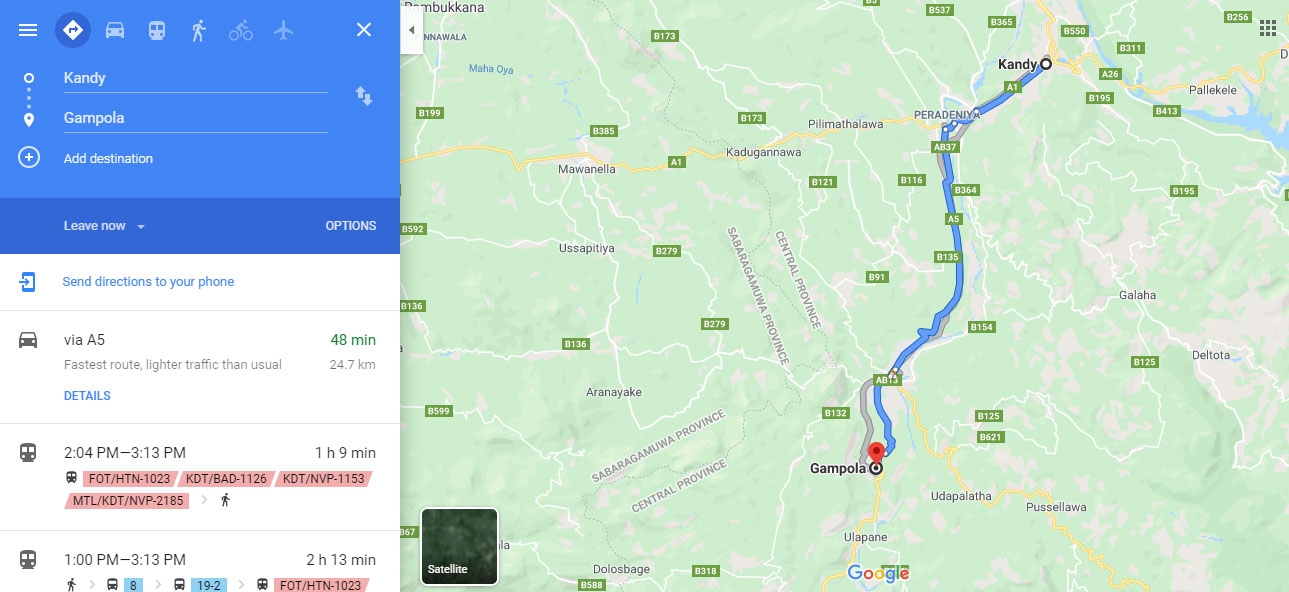Ambuluwawa Tower and Bio-diversity Complex Gampola
Ambuluwawa Tower and Biodiversity Complex is located in Gampola, a town located in Kandy District of Sri Lanka. It is an important ancient capital in our history. King Buwanekabahu IV made Gampola the capital of the island and ruled four years in the mid-fourteenth century.
History
Spread of Buddhism can be directly attributed to the agricultural economy of the country. Wewa (reservoir), Dageba (stupa) and Pansala (temple) is a central theme in Sri Lanka. The first such evidence of human settlements in the historic period are clearly defined by the Early Brahmic Inscriptions. Vegiriya Devale near to Gampola bear an Brahmic Inscriptions that could be dated to 3rd century BC.
Though these Brahmic Inscriptions clearly shows the human habitation and Buddhism in the region at the time, evidence about it since then can only be found only rarely until 13th century AD.
Ambalam
Ambalam or resting houses still stand along the ancient road crossing Gampola. For an example, Panabokke Ambalama is dated back to the Gampola era. Further, one of the ancient routes for Sri Pada was tracked through this region. Minister Devapathiraja in the reign of Parakramabahu II, built a Thirty-five cubit long (300 riyan) bridge to facilitate the pilgrims.
Importance
However, in comparison to other capitals of the country, this one was neither highly populated nor developed. Although underdeveloped, Gampola was able to act a safe hideout to mount resistance against any attack by invaders.
The Gampola Kingdom occupies an important place in history as it used to be the seat of government of the Sinhalese Kings.
The political or social value of the Gampola did not regain since its fall against the rising powers in Kotte and Kandy. However, during the short period of the kingdom, it accomplished enough to be permanently written into the annals of Sri Lankan history.
Attractions in Gampola
Aladeniya Temple
The only remaining wooden door frame belonging to the Gampola period can found in this temple, which called ‘rambawa’ or golden door frame.
Ilupandeniya Viharaya – haas remains of Gampola period stone sculptures.
Walwasagoda temple and devalaya
Two devalas and a chaitya from the 14th century AD.
Niyamgampaya Rajamaha viharaya
This historic temple, is located 3 km away from the city. Mahavamsa, mentions the site as ‘Niyamgampasada’ and as ‘Niyamgampaya’ in Nampota. Sinhala Dalada Vamsaya records the temple once gave protection to the Tooth Relic. Inscriptions erected by Wickramabahu III (1356–64) could be found in the precinct of the viharaya. Stone sculptures in the temple are considered among the few remains that left by the Gampola Kingdom.
Polwatta viharaya (Buwaneka piriwena)
This is also quite near to city. The first temple is known as Lankatilaka viharaya, constructed by Rajadhi Rajasingha (1782–89) with the architectural advise of Eldeniye Rajakaruna. Temple was renamed as Buwaneka Piriwena in 1928 AD.
Botalapitiya Bo tree
On 7 June 1871, one of the most famous historical events took place near to this bo tree, i.e. Migettuwatte Gunananda Theros debate against with Christian priest, which the whole event consisted with five such debates.
Ambuluwawa Kanda
A 3515 ft high mountain, rising up from the west of Gampola city, provides a natural shield. Recently a characteristic cone shaped Stupa built on this mountain named Ambuluwawa is the main attraction.
Current Main Attraction:
Ambuluwawa Tower
Located 3,567 ft. above mean sea level, Ambuluwawa mountain hosts a hilltop tourist spot that houses a biodiversity complex celebrating environmentalism and cultural and religious diversity. A notable feature of this complex is a large winding tower resembling a Buddhist stupa, which is located on the mountain peak.
How do I reach the Ambuluwawa Tower & Biodiversity Complex?
You can reach Ambuluwawa tower & biodiversity complex by any mode of transport. Space for parking your vehicle is available at the entrance to the Bio-Diversity Park. Unfortunately buses will have disembark passenger at this point. There was no fee for parking your vehicle ( when i visited) but it could change based on demand.
The road
The road from Gampola city, a winding road up the mountain, is a smooth, well carpeted road. Road width is large so that any vehicles could easily pass each other. Please be mindful of the larger vehicles such as buses, give them ample space to complete their turn at hairpin-bends. As you proceed further up the mountain spectacular views beyond the cliff edge will definitely give you goose-bumps. (*Use Google maps to navigate as I found them to be accurate in Gampola)
Ambuluwawa tower & biodiversity complex
The Monkeys
When you reach the Ambuluwawa tower & biodiversity complex summit, you are first welcomed by a horde of monkeys, eager to probe and look for food and scraps they could grab. So be careful with your personal items and kids (if any) should stick with their parents. Do not feed the monkeys as this would encourage them to be bold and approach you more often. Bathroom/toilets are there on the left of the entrance but its cleanliness is not assured.
The Gardens
As you enter complex, you are directly at the foot of the Ambuluwawa tower. The entrance of the tower itself is on the opposite side. The complex area opens up in to a garden and observation deck with scenic views overlooking the surrounding city of Gampola. It is ideal if you could grab your group pictures at this point. Also within gardens, there are several other small structures, a hindu kovil, an Islamic mosque, a Christian church and a Buddhist statue. The gardens are very tranquil with the high altitude winds hugging your skin abd complementing the overall environment.
The Tower
The tower itself can be described as having a wide circular base, with the inner stairway opening on to a 360 degree observation deck with panoramic views. Depending on the day and weather conditions, there will be strong winds, which I experienced, it gave us the feeling of literally being blown away. Every step felt lighter than usual and holding out our cameras felt unsafe. As I got to know it is not always like this, but it was quite an experience even before we got to climb the spiral stairway hugging the exterior of the tower.
Ambuluwawa Tower & Biodiversity Complex offers a mesmerizing 360 Degree Panoramic Landscape
The Spiral stairway
Further up, the inner stairways comes to an end. The external spiral stairway is narrow and barely enough for two people to pass. One has to squeeze and hug the walls while the other person has to hug the hand railing as they pass each other. The stairway keeps on narrowing as you go up making it an even tighter squeeze as well as the realization that person coming down and on the outer side has nothing to hold on to. The person going up and on the inner side hugging the wall has the luxury of holding onto metal bars embedded on the wall. Once every 2-3 turns there are small chambers that open into the center of the structure, where one can take refuge to allow people to pass by.
The view
If you’re not distracted by heights and if your eyes are not glued to your feet, you and enjoy magnificent views of the surrounding areas. If you have the fortune to not encounter strong winds or at least get some moments when the high winds do die down, a small window of opportunity open for you to stretch that selfie stick and grab that iconic and sought after picture. On other days the mist would obscure the panoramic views but still leave you breathless.
Advice for staying around Ambuluwawa tower and biodiversity complex : We recommend that you make a day-visit if you have your own transport and head back to Kandy, Nuwara Eliya, Colombo or wherever your final accommodation for the night maybe.
(Make sure your selfie sticks are not flimsy and that they do come with a hand strap. Even more importantly that the phones or action cameras are fastened tightly to the stick – Anything falling from the top could be potentially deadly upon impact)





